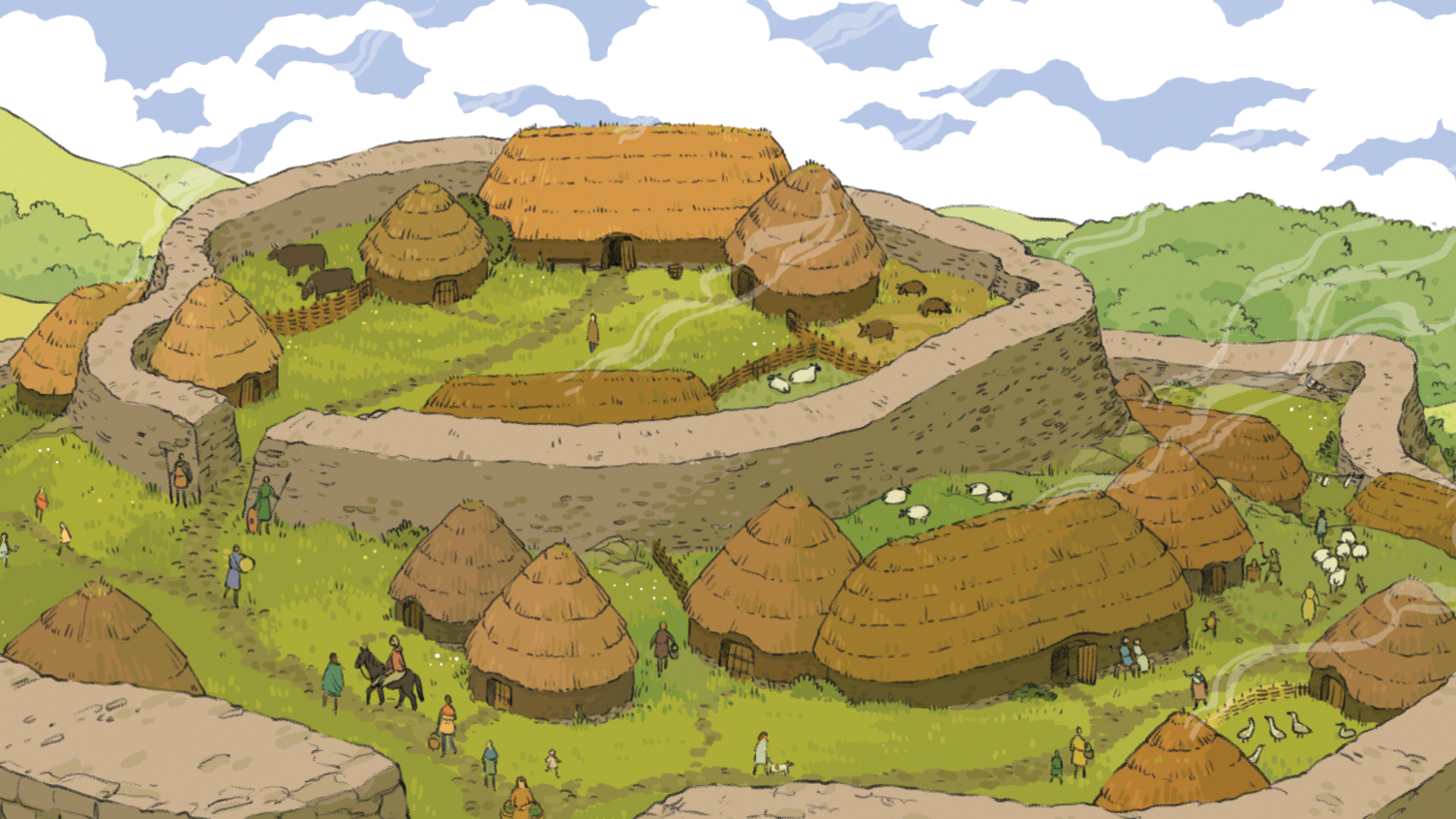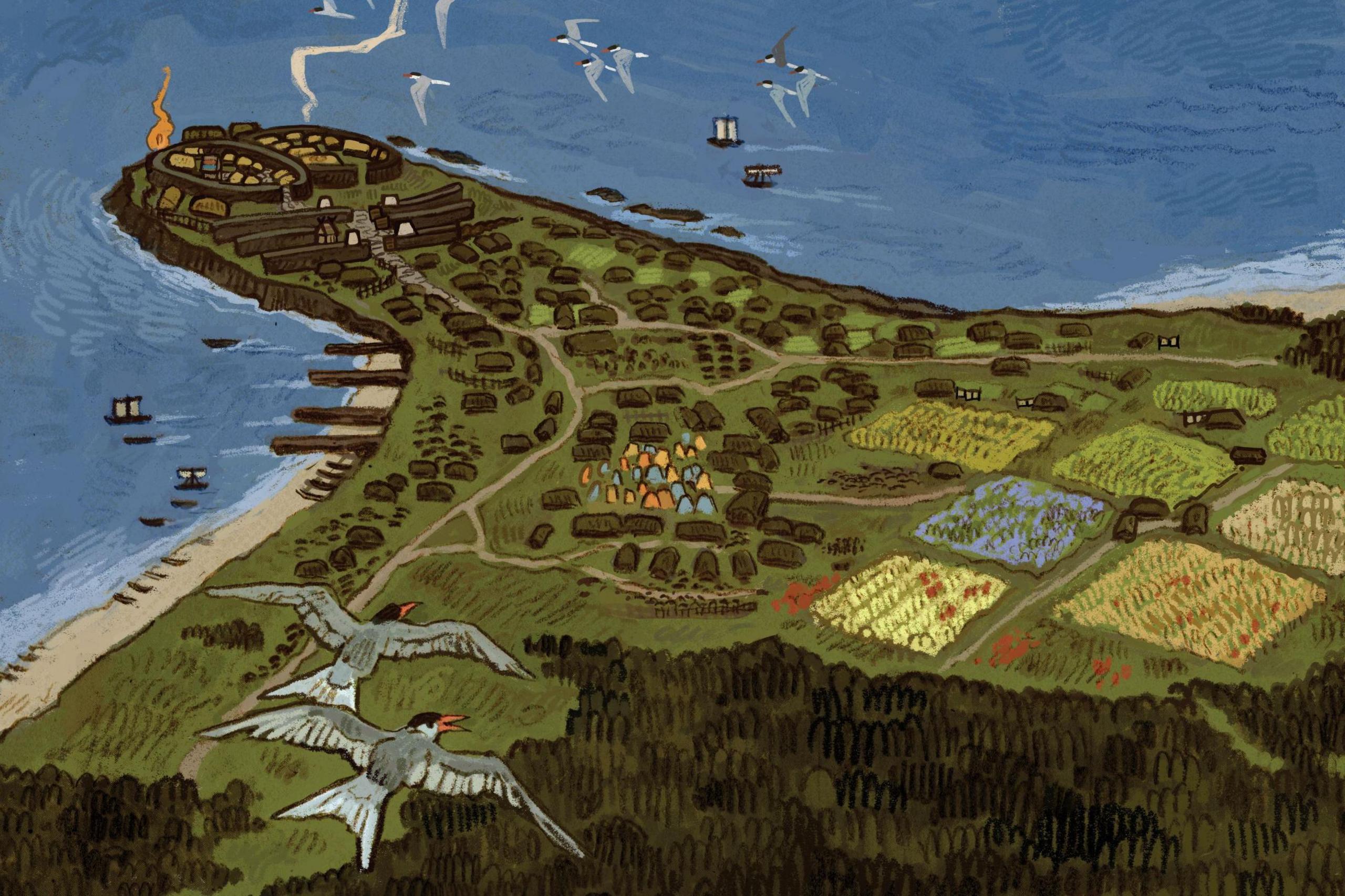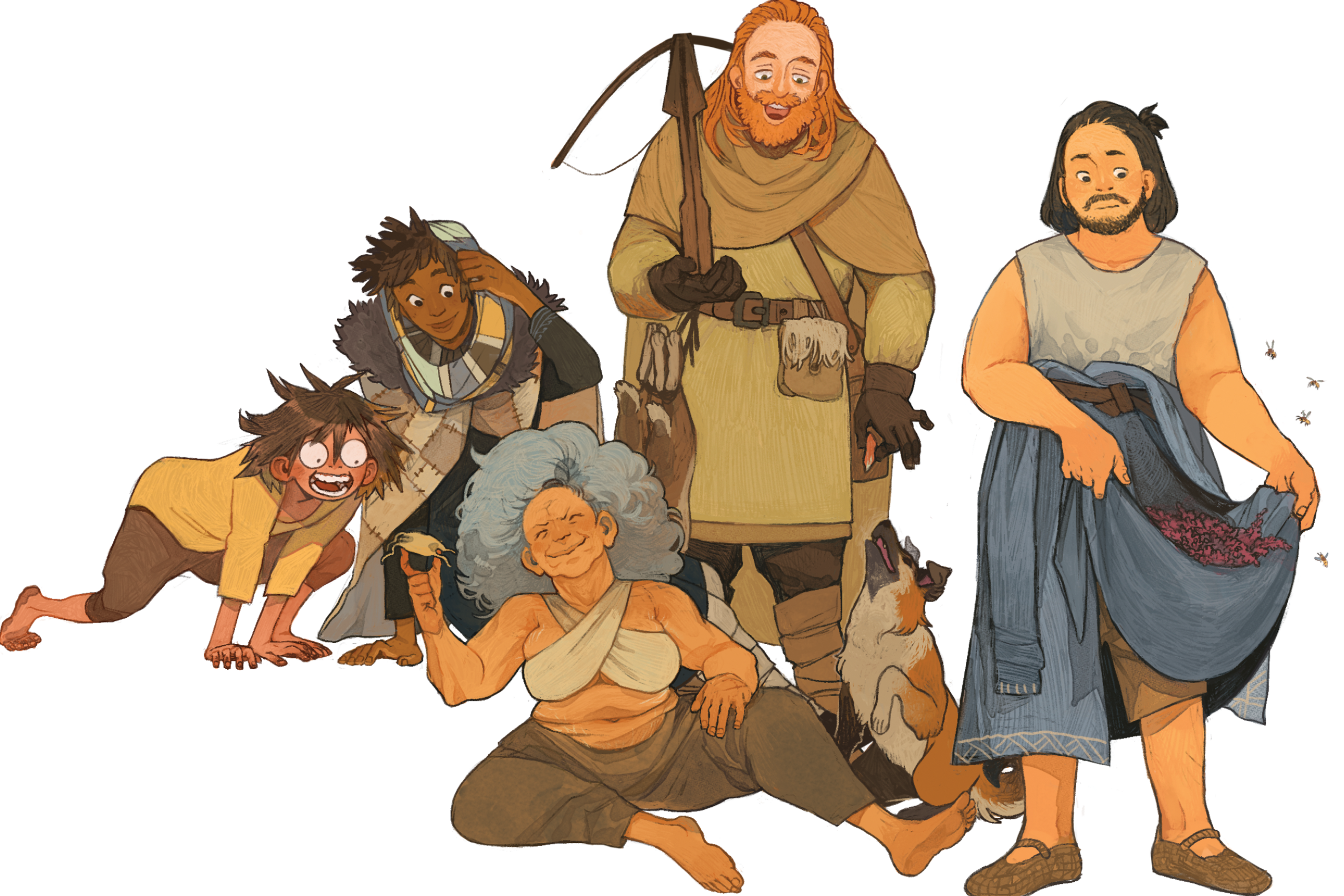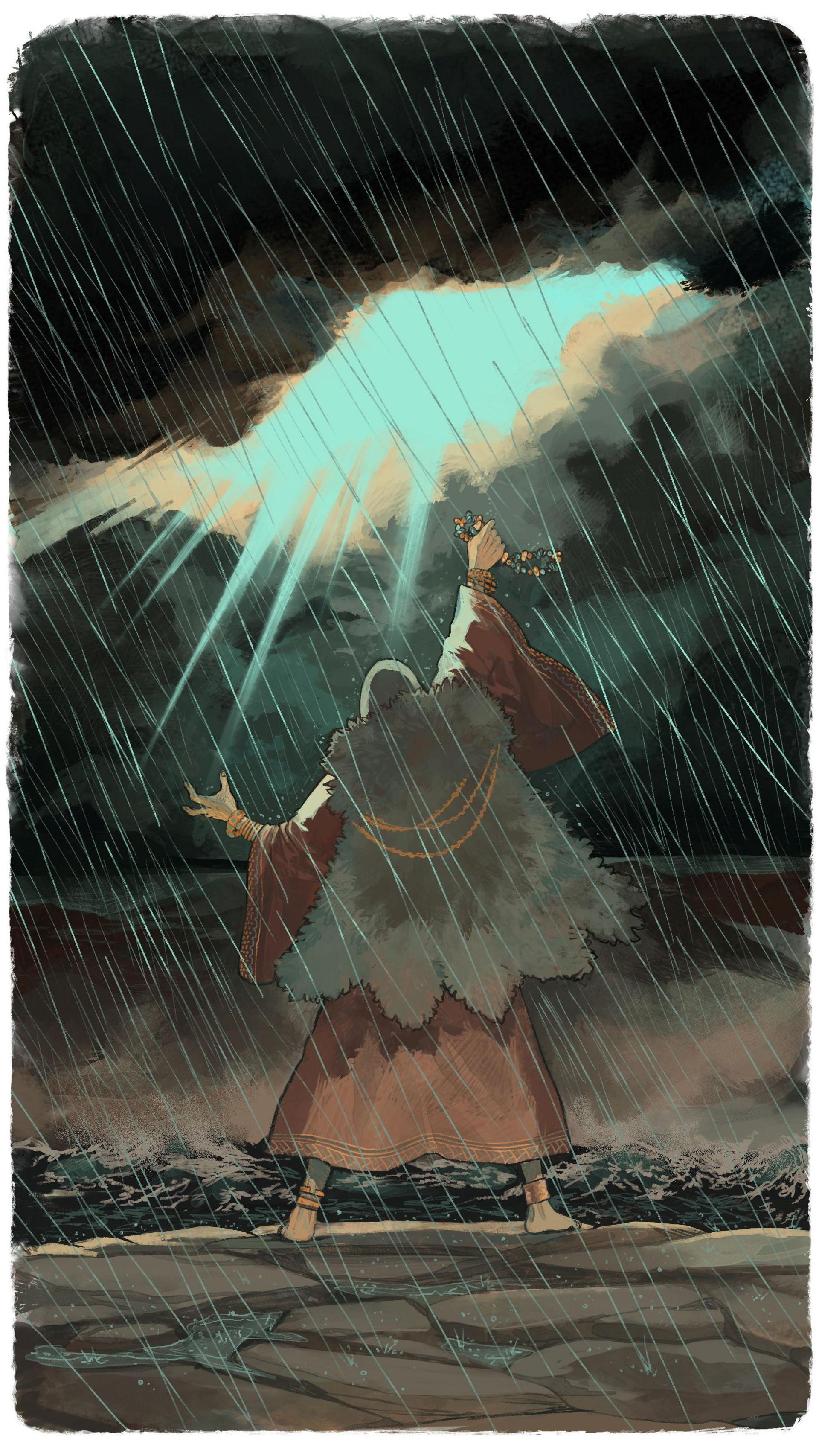Game designers bring Scotland's mysterious Picts to life
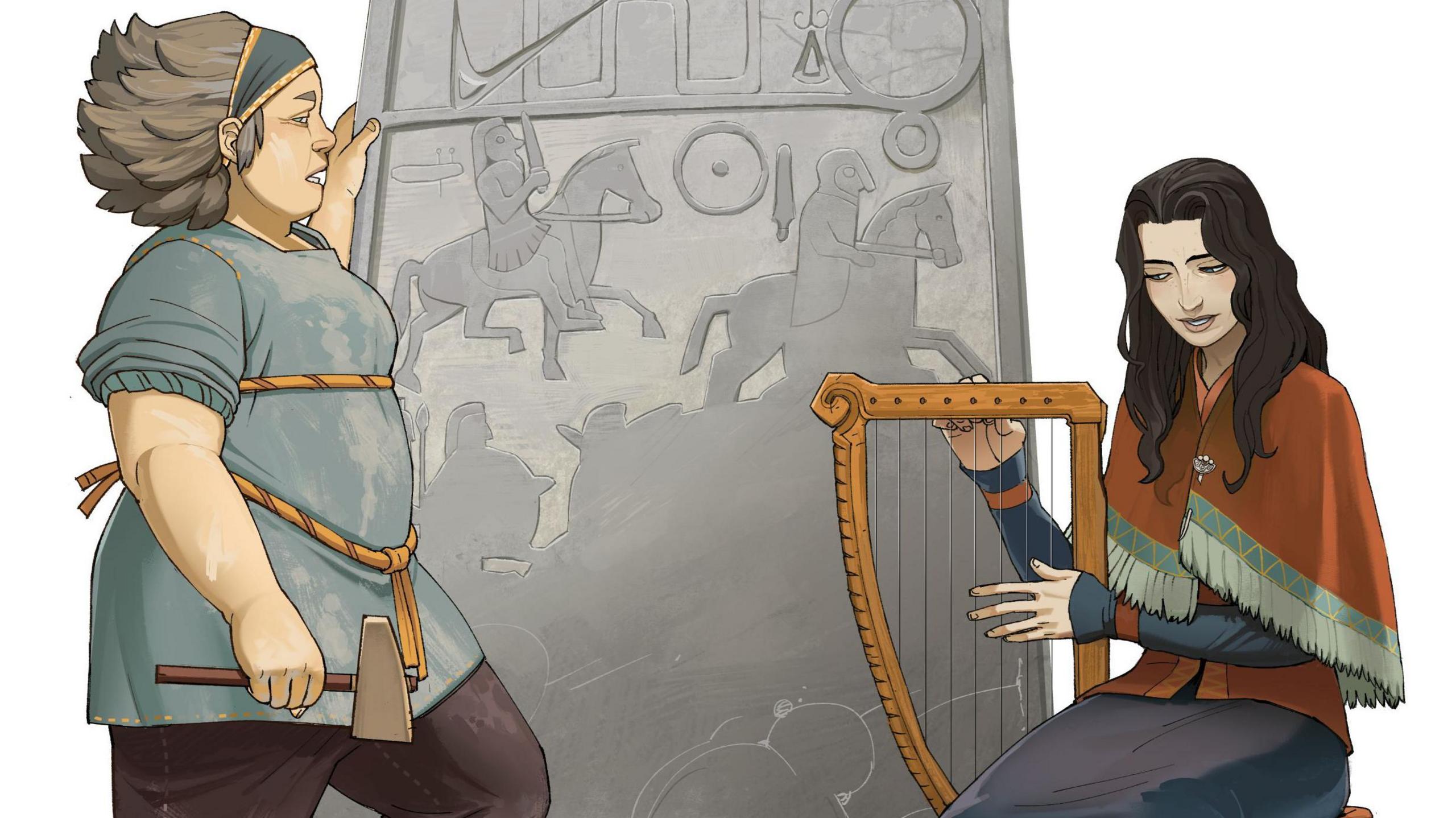
A number of artists were involved in the project
- Published
Game designers have teamed up with archaeologists to create a new illustrated guide to a mysterious early medieval Scottish society.
The Picts, the descendants of Iron Age tribes, are known for decorating standing stones with intricate carvings and constructing impressive hillforts.
They ruled northern and eastern Scotland for hundreds of years before vanishing from written records about 1,100 years ago, the name of their kingdom disappearing with them.
Over the last four years, designers, writers, archaeologists and artists have worked on the book Carved in Stone: A Storyteller's Guide to the Picts.
Ancient 'power centre' uncovered in Perthshire
- Published13 February 2020
Pictish stones re-imagined in colour
- Published24 June 2017
The project was led by Brian Tyrell of Edinburgh-based Stout Stoat Press and Dr Heather Christie, who is an archaeologist, gamer and YouTuber.
The Society of Antiquaries of Scotland also worked on the book through its Dig It initiative.
One of the ideas behind Carved in Stone is for it to be used as a guide for tabletop role playing games (TTRPGs) similar to Dungeons and Dragons.
Pictish people formed a series of smaller kingdoms before they were unified into a single kingdom around the late 7th Century.
'Blue-tattooed barbarians'
Archaeological evidence suggests Moray and Aberdeenshire were at the heart of this kingdom, and that it stretched to Skye, the Firth of Forth and Shetland.
Archaeologists say the Picts are often been portrayed in popular culture as "blue-tattooed barbarians", but in reality their society would have been "complicated".
Its members were likely to have included farmers, hunters, monks and craftspeople.
The Carved Stone team said evidence of a Pictish tattooing tradition seemed inconclusive and added that tattooing did not show up in any of their stone carvings.
They said some Picts were likely to have body art, but of varying colours.
- Image source, Nathaniel Santore/gyrium.neocities.org
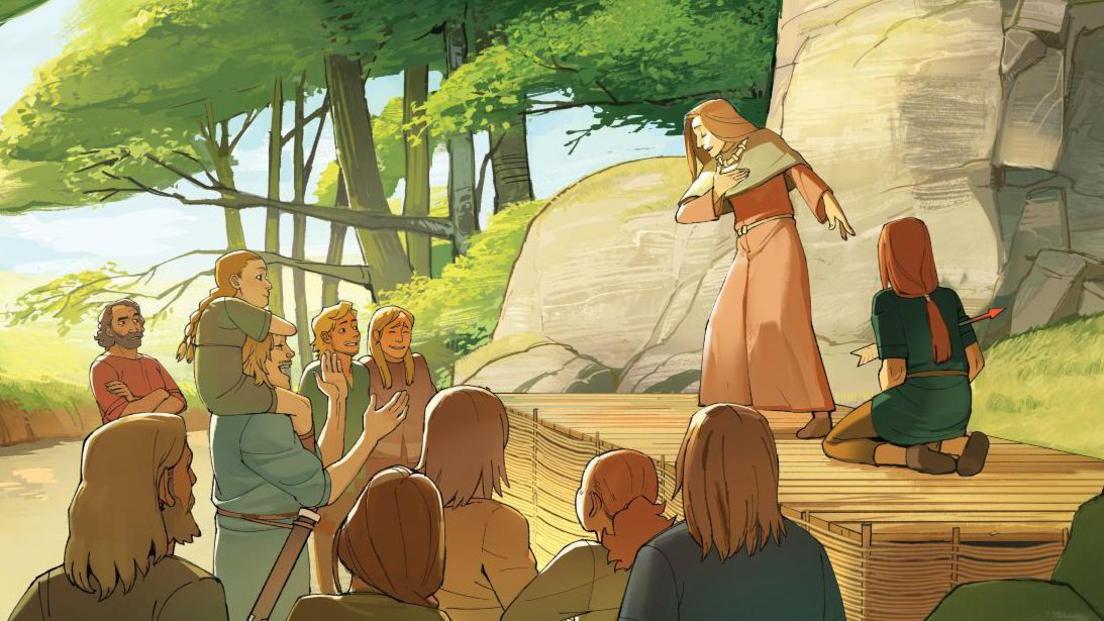
Image caption, Game designers, writers and archaeologists worked on the book drawing on the latest research
1 of 5
Dr Jeffrey Sanders, head of outreach at the Society of Antiquaries of Scotland, said: "There have been so many exciting archaeological discoveries about the Picts in recent years and we wanted to find a way to really bring these stories to life.
"So we spoke to Stout Stoat Press about designing a setting for a tabletop role-playing game where people could actually use this information to play as a Pict.
"But to do justice to their diversity of cultures, languages and social life, they ended up creating a book that far exceeded our original plan, effectively producing a sweeping guide which captures early medieval Pictish life in its rich entirety."
Recent Pictish finds have included an "incredibly rare" stone carving of a face that was unearthed in Fife.
University of Aberdeen student Jodie Allan made the find while volunteering at an archaeological dig at an ancient hillfort at East Lomond, near Falkland.
A Pictish ring - thought to be at least 1,000 years old - was discovered by a volunteer on a dig in Moray.
John Ralph said the find at the site of a fort in Burghead felt like a "striker scoring a goal".
And in 2019, a 1,200-year-old standing stone discovered in the Highlands was found to have carvings never before seen on a Pictish stone.
The stone was found lying in the ground and covered by vegetation at an early Christian church site near Dingwall.
